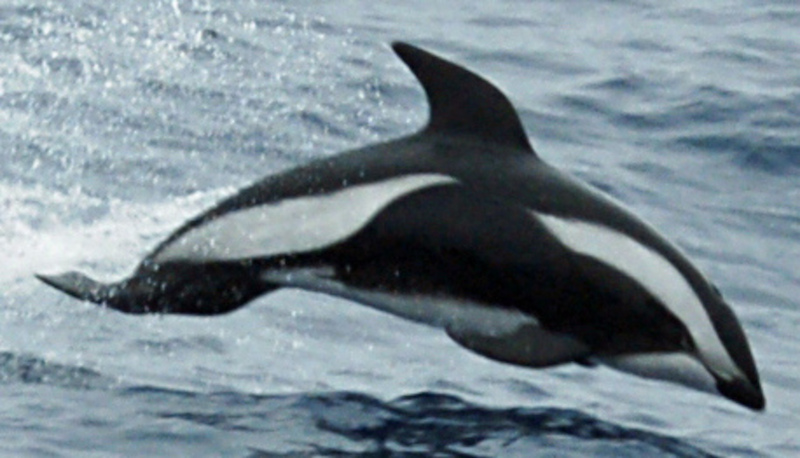Hourglass Dolphin Facts
- Firstly, the remarkable Hourglass Dolphin remains an extremely rarely encountered variety of cetacean. In fact, only 6 complete specimens of the impressive animal, living or dead, have ever been studied.
- As a result of this rather astonishing fact, scientists have very little reliable physical data about this particular species of cetacean.
- Reasonable deductions about its behavior and ecology come from the widely scattered and limited observations in the wild. However, scientists admit that these are by no means certain.
- Also, since its population remains unknown, the IUCN lists it as a Species of Least Concern, pending further data.
- Finally, due to the uncertainty about its numbers, all hunting of this animal is thankfully prohibited by international law.
Related Articles
Hourglass Dolphin Physical Description
Most notably, the Hourglass Dolphin represents a relatively small species of cetacean. The average length of the very few individuals studied, who appeared to be adults, was roughly 6 ft (1.8 m).
Also, in color, these beautiful creatures principally appear black, with large white or gray stripes on the sides and stomachs.
In addition, the marvelous pattern creates the impression of an hourglass. This therefore serves as the source of the common name. Furthermore, the average weight of this remarkable dolphin equals about 250 lb (113 kg).
Its body shape also seems stout in relation to most of its relatives.
Researchers believe that the trait of sexual dimorphism is present in this species. The males are likely slightly smaller and lighter than the females. However, the scientists admit that this remains only a supposition.
Also unique among dolphins, the length of the dorsal fin varies greatly between individuals.
- Kingdom: Animalia
- Phylum: Chordata
- Class: Mammalia
- Order: Artiodactyla
- Family: Delphinidae
- Genus: Lagenorhyncus
- Species: L. cruciger
Hourglass Dolphin Distribution, Habitat, and Ecology
Perhaps the most astounding fact about the Hourglass Dolphin is its territorial range. That’s because the rather amazing mammal appears to possess a primarily circumpolar distribution.
Due to this fact, the farthest north its has ever been reliably sighted is the southern Atlantic Ocean. Further, and more specifically, most of the sightings occurred in the vicinity of New Zealand.
It also appears to be primarily a pack animal, like many related species tend to be. As a result, in the majority of sightings, specimens have been traveling in small groups. These typically consist of 5-10 individuals.
The Hourglass Dolphin is also a carnivore by nature, as remains true for all known dolphins. Additionally, its primary diet appears to be a wide variety of small fish, squid, and crustaceans.
Its natural predators remain unknown, though the Orca is the most likely candidate for this.
Finally, to date, the breeding patterns of this animal and lifespan remain a mystery.
Species Sharing Its Range
Check out our other articles on 5 Incredible North American Islands, Kakapo, Belogradchik Rocks, Devil’s Walking Stick, Marbled Cat, Coral Pink Sand Dune Beetle, California red-sided garter snake

